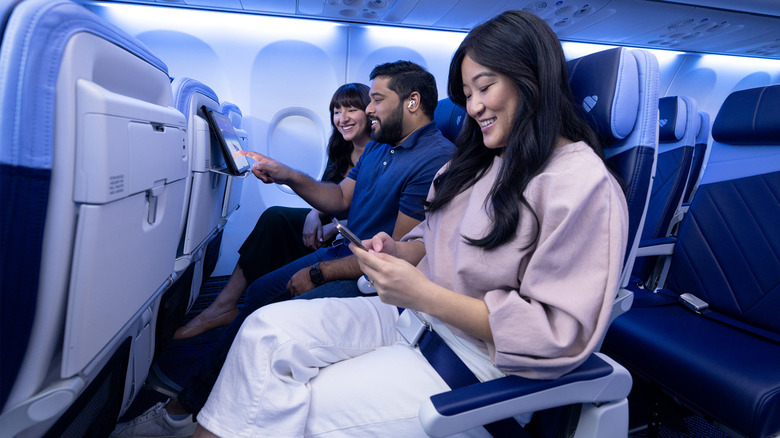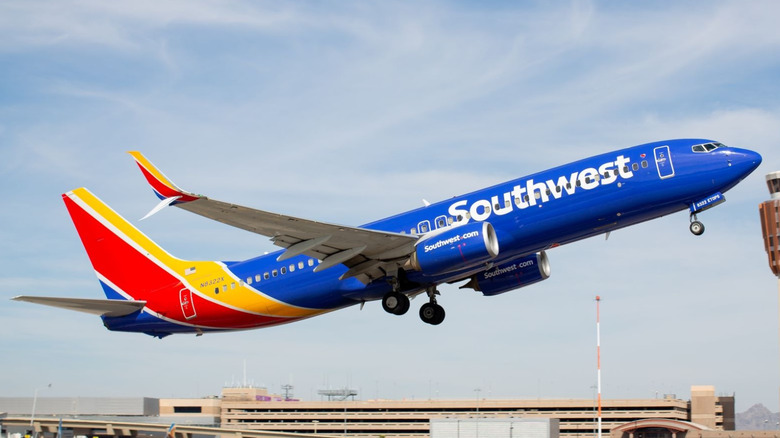What Do All The Dings You Hear On A Plane Mean?
In almost every airplane flight you'll take, a dinging sound will be heard at points throughout the trip. Given that there are millions of flights a year — 35.3 million scheduled flights worldwide in 2023 alone, according to the Air Transport Action Group, a flight-industry trade association — that's a lot of dings. But what do those mysterious dings mean? And for the more nervous fliers among us, are they something to worry about?
Well, at least for the most part, they're nothing to worry about. Most in-flight chimes are purely routine and serve as a method of communicating with passengers, as well as a coded language for the flight crew. In high-tech machinery like airliners, these simple sounds are a basic, effective way of keeping flights running smoothly, signaling everything from seatbelt reminders to crew instructions. Let's take a closer look at in-flight dings and the messages they convey to crew and passengers.
Common in-flight chimes: what the captains say
The first thing to clarify is that there is no consensus across airlines as to what in-flight chimes signify. Chimes intended for passengers, such as the seatbelt reminder, are fairly consistent, typically marked by a single ping accompanied by the seatbelt sign lighting up. But other chimes could be coded signals between the pilots and the attendants, which is where there can be variances.
For example, we can get a pilot's perspective from TikToker @captainsteeeve (American Airlines pilot Capt. Steve Scheibner). He will chime the flight attendants three times during the journey. The first tells them that take-off clearance has been given, and to be seated. The second, when the plane has reached 10,000 feet, says it's safe to leave their seats and begin service. (Though flight attendants aren't sky waiters — one of the things pilots wish passengers knew.) The last comes as the plane approaches 10,000 feet again, during its descent — it tells the flight attendants they've only a few minutes to get the cabin prepared for landing and take their seats.
A former PSA Airlines pilot with a TikTok channel, @garybpilot (Gary Baumgardner), confirms Scheibner's description. However, he says the 10,000-feet chimes are usually double chimes, and the specifics can vary not just by airline, but by aircraft. He also notes that chimes occur each time the pilots call the attendants, passengers press the service button, or flight attendants at either end of the plane contact each other.
In-flight dings: beyond the basics
While the chimes communicate routine in-flight processes like seatbelts, altitude, and takeoffs, there are differences in the number of chimes and instances that go beyond the basics. For instance, flight attendants can also use dings to communicate with the pilots. This can be as simple as a single chime asking if the pilots would like a cup of coffee to three chimes that report a medical problem. Similarly, the captain can use multiple dings to warn the flight attendants of strong turbulence ahead or an in-flight emergency.
There are also variations in tone to consider. For instance, a high ding followed by a low ding is often heard when flight attendants are signalling each other, whereas a passenger pressing the service button generates a single-toned chime. And how do the pilots activate the dings? They toggle the "No Smoking" sign on and off. In such technologically advanced machines, this may seem primitive, but it's a proven mechanism and the adage "If it ain't broke, don't fix it" can be applied.
Ultimately, single or double dings throughout a flight are quite normal and could just indicate that the captain needs a caffeine fix. Only multiple dings can be a warning of a major problem, but since flying is still the safest form of travel, you're unlikely to hear these.


